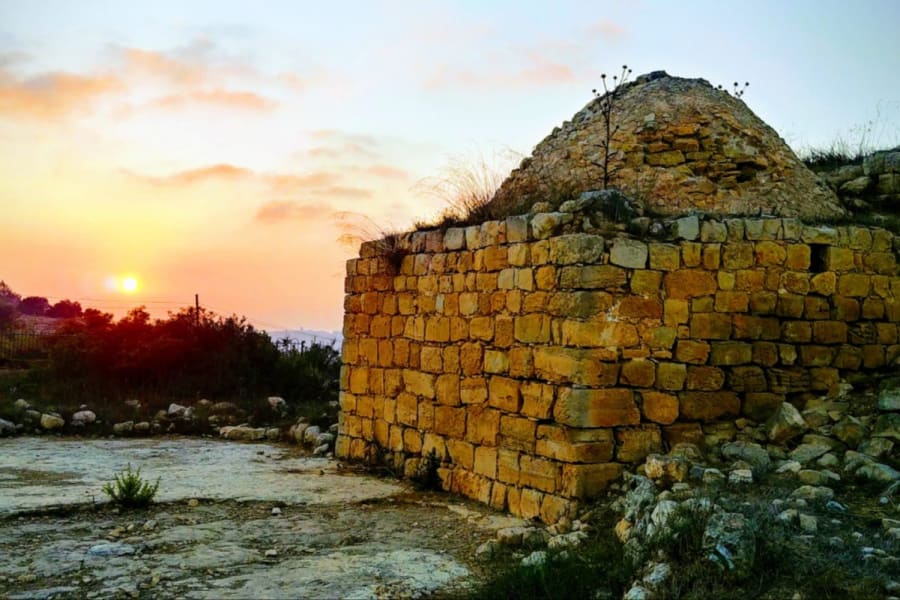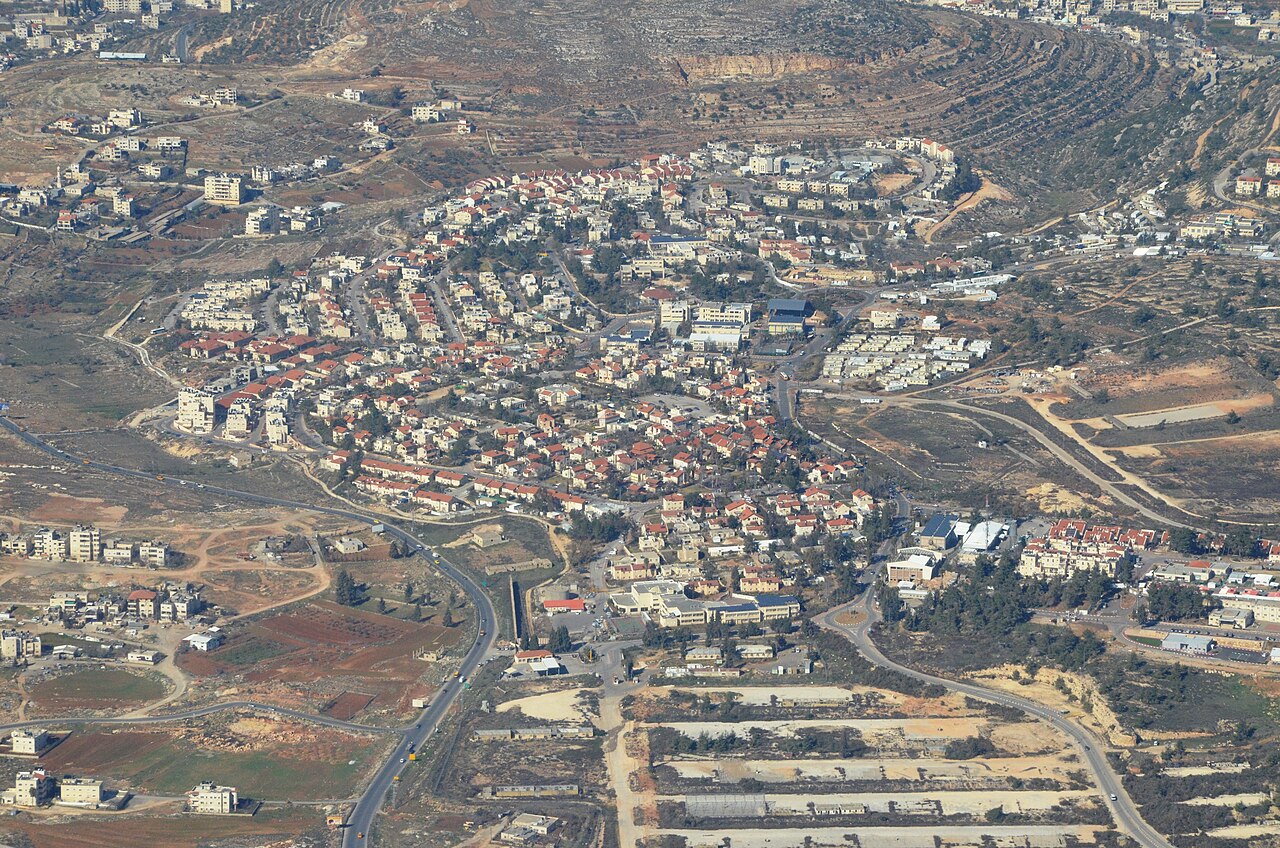Exploring the ancient site of Beit El, the ‘House of God’

Beit El is the second most frequently mentioned town in the Bible, according to Israeli tour guide Levi Simon. “This is where Jacob dreamed of a ladder reaching up to heaven,” he told ALL ISRAEL NEWS correspondent Oriel Moran. “We’re going to explore it and feel the presence of God in this place. I’m so excited. Let’s go.”
Located in the region of Samaria, less than 30 kilometers (18 miles) north of Jerusalem, ancient ruins at the site of Beit El (“house of God”) can still be seen today.
Reminding us of the famous biblical story in Genesis 28, Simon describes some of the history behind the site.
“Jacob has this revelation after he goes to sleep and this beautiful dream of a ladder going up to heaven from this location facing eastwards. He wakes up and he's in awe from this phenomenal dream that he has of God standing at the top of a ladder, angels coming up and down, and then God once again reminds him of the promise,” relays Simon, referring to the promise that God would give the land to the descendants of Abraham and Isaac. “He will fulfil that promise and he won't leave us until that happens.”
Struck by the story of how God came so close to Jacob – that the patriarch of the 12 tribes personally experienced God’s presence in that place – Simon’s attitude during the visit is one of reverence rather than impartial education. However, he has many scholastic nuggets of wisdom to impart.
While Beit El was overrun with idolatry and paganism at times and falling into ruin at others, many archaeological remains can still be seen. Simon points to stones carved back from the 4th century B.C., from the time of Nehemiah and Ezra.
“When they come and bring the Jews back from Babylon, Beit El is this small place. It's not such a big, prominent city. But this plays a major role in the future for trade as an essential route going from Jerusalem up to the north towards Shechem,” said Simon. “Beit El was… a trade place where people would stay, you would be on your way to Jerusalem.”
One such wanderer who passed through Beit El was Abraham himself. In Genesis 12, the Bible describes how the patriarch came to Beit El from Shechem and the oak of Moreh, where God gave him the promise of the Land. He stopped briefly at Beit El before continuing on his journey down south:
“He went on toward the hills east of Bethel and pitched his tent, with Bethel on the west and Ai on the east. There he built an altar to the Lord and called on the name of the Lord. Then Abram set out and continued toward the Negev" (Genesis 12:8-9).
Simon pointed out a large upright stone at the site, known as a “matzeva” in Hebrew, within a structure dating back to the Bronze Age. There are several such standing stones at different locations around Israel. They were erected to serve as a memorial of an important event or to honor a deity.
“We can see a stone which is turned upright at the entrance to a house,” Simon explained in the ancient structure. “We can see a basin here which was probably used for water for animals to come and drink as they were welcomed in… During the Canaanite period, when two tribes made contracts with each other, they would then put these stones, specifically like this one, upright as a reminder for the contract,” he said.
The biblical account also describes the way Jacob erected a matzeva using the stone he had used as a pillow the night of the dream:
“When Jacob awoke from his sleep, he thought, ‘Surely the Lord is in this place, and I was not aware of it.’ He was afraid and said, ‘How awesome is this place! This is none other than the house of God; this is the gate of heaven.’ Early the next morning, Jacob took the stone he had placed under his head and set it up as a pillar and poured oil on top of it. He called that place Bethel, though the city used to be called Luz” (Genesis 28:16-19).
“There's no comfortable way to sleep in the desert, but he did the best that he could,” Moran suggested. “When he awakes, he understands that he encountered God to dedicate the place to God. He took oil that he had with him and he blessed the place. Something sort of like this. And I'm sure he didn't spare from anything that he had because he said after that that he'll give a tenth of everything he owns to God. Basically, his life was covered with the anointing of the Spirit of God that he said that he would be with him, just like he is with us today.”
Reflecting on the theophany event, Simon and Moran took time to sit under an oak tree to prayerfully meditate on the story, and bask in the presence of God.
Simon also showed several Roman medallion shapes carved into stones still visible at the site, decorated with grapes and other designs, along with the remnants of ancient columns from the time of the Second Temple.
Another link from the Second Temple Era to the site of Beit El comes in a somewhat cryptic message from the Jewish Messiah, Yeshua, right at the end of the Book of John, chapter 1.
The entire story of Jacob’s Ladder is so mysterious, not least due to the fact that angels are described as going up before coming down, that Maimonides, the famous medieval rabbi, decided it must be a parable with hidden meaning. He decoded each element of the story, except for the ladder itself.
In his book “Guide for the Perplexed,” it becomes apparent that he saw the ladder as representing intellectual ability, with people at various degrees of ascension and only a few (including gentiles, radically) having the capacity to reach the heights of the intellectual elite.
Yeshua gave quite a different interpretation of the ladder that linked heaven and earth back there in Beit El. After His interaction with Nethaniel, who had been sitting under a fig tree, Yeshua reveals what the ladder means.
Jesus said, “You believe because I told you I saw you under the fig tree. You will see greater things than that.” He then added, “Very truly I tell you, you will see ‘heaven open, and the angels of God ascending and descending on’ the Son of Man'" (John 1:59).
Jacob was encouraged by the nearness of God when he saw the ladder in his dream at Beit El, and Maimonides believed it was a metaphor for wisdom, but according to Yeshua, the ladder is the very person of the Messiah who came to connect humanity with God.

Is All Israel News’ faith-based reporting important to you? Be part of it—help us continue by becoming a $5/month supporting partner.

Jo Elizabeth has a great interest in politics and cultural developments, studying Social Policy for her first degree and gaining a Masters in Jewish Philosophy from Haifa University, but she loves to write about the Bible and its primary subject, the God of Israel. As a writer, Jo spends her time between the UK and Jerusalem, Israel.













